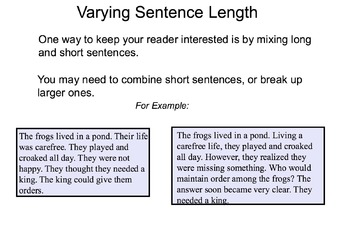We’ve officially reached week five, and from the title you must be wondering what these “lessons and techniques” we’ve learned about are. Whether it was known or not, over the past four weeks I’ve been enhancing my writing with flair. In every blog post I’ve made, I utilized skills I learned from Dr. Heather Holleman in her “Writing With Flair” (10/10 would recommend). To give you all the gist of the 5 chapters I’ve read:
- Choose a verb with flair/ Eliminate feeble verbs
- Toggle between the Big 5 punctuation marks
- Vary the length of your sentences and change the way they start to create rhythm.
- Garnish your paragraph with some clever wordplay if you can.
- Engage your audience.
A simple test of how we can determine the usefulness of these tactics lies in my previous blog posts. If you believe there was an improvement in style/spice each week, then these are just the tips for you. While all these mentioned above are incredibly insightful and beneficial for the advancement of any writer—two topics stood out the most to me.
- #1 being the variation in sentence length/ pattern.
- #2 being the audience section.
Thinking back, have you ever had to read paragraphs upon paragraphs with monotone sentences? Odds are you have and it was immensely boring, though there must have been ones where despite its lengthy read, you were captivated by their wording. By introducing a range of sentence lengths/style from short ones to long ones with occasional decrescendo patterns (long to short phrases); it all works to create/ set the scene for a more visually interesting read. Just look at the example below:
 It’s clear which variation of the text is more preferable to read. The right one implements many strategies to increase variety such as posing a question, combining sentences, leaving short ones to give the reader a break, and etc. amplifying the interest. In the past my work would have resembled the one on the left, as I never put much thought into the “aesthetic delivery,” focusing only on the content. Now my eyes have been opened to the vast array of details I can tweak to improve my writings.
It’s clear which variation of the text is more preferable to read. The right one implements many strategies to increase variety such as posing a question, combining sentences, leaving short ones to give the reader a break, and etc. amplifying the interest. In the past my work would have resembled the one on the left, as I never put much thought into the “aesthetic delivery,” focusing only on the content. Now my eyes have been opened to the vast array of details I can tweak to improve my writings.
 In regards to being aware of the audience in your work, this is a necessary step I feel many writers (me included) lose sight of. You might have all the right information, though in order for your audience to read it, you have to cater it towards them. You should address your audience and engage with them in the reading to hold their interest. You should remember to build rapport through your language, use of ethos, pathos, and logos, and etc. By including this key step I am better able to spread my messages, rather than writing in a way that would appeal only to myself.
In regards to being aware of the audience in your work, this is a necessary step I feel many writers (me included) lose sight of. You might have all the right information, though in order for your audience to read it, you have to cater it towards them. You should address your audience and engage with them in the reading to hold their interest. You should remember to build rapport through your language, use of ethos, pathos, and logos, and etc. By including this key step I am better able to spread my messages, rather than writing in a way that would appeal only to myself.
To summarize, will the inclusion of all these strategies lead to the perfect written piece? No of course not, you can have all the ingredients for a perfect cake, but if you don’t use them right or precisely the end result could be drastically different from what you may have envisioned. This fact alone may be discouraging, though with practice and time you will end up with a masterpiece and a skill set to use for the rest of your life! So, take the time now, as I have, to practice and help your future self be the best they can be.
You did an amazing job on Blog Post 5! I really love how you engaged with the audience. You utilize techniques from Lesson Five of How to Write with Flair, and you did it seamlessly. Additionally, I really enjoyed how you laid the chapters out in a numbered list. That made it so I knew exactly what the lessons from the book were and what you were going to be talking about! All in all, you did a great job on this blog and I really enjoyed reading it.
I really enjoyed reading your blog post! Reading, at times, can be a somewhat boring activity. To combat this writers have to engage with style, form, and substance to continually make the act the reading worthwhile. Much of my own college reading lists have been monotonous and boring, the few that have stuck with me are not because of their content, but in their style and presentation they have stayed with me. Now that you’ve read How to Write with Flair, does style and aesthetic now stand out more to you even if the content isn’t for you?